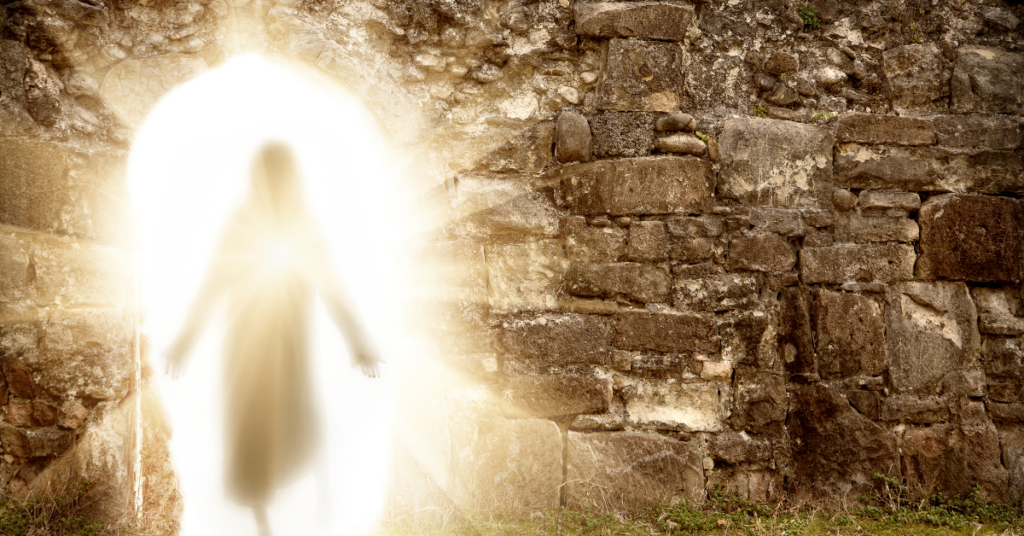While many people seem to focus more on the celebration of the birth of Jesus at Christmas, the real celebration for Christians is Easter, or Resurrection Sunday. Without the life, death, and resurrection of Jesus, there would be no reason to celebrate His birth. The resurrection of Jesus is the central part of Christianity. If Jesus had not resurrected from the dead, then our faith is useless, and we are still dead in our sins. And if that is the case, then we are wasting our time following Jesus.
Since the resurrection is the most critical part of Christianity, it is important we have confidence that the resurrection truly took place. And we need to be able to share the evidence for the resurrection with others, whether it is with unbelievers to whom we are witnessing or with our children whom we are raising in the faith.
There’s a beautiful hymn that says, “He lives! Christ Jesus lives today! You ask me how I know He lives, He lives within my heart.” That is true, but in the wrong order. We know He lives because of the evidence, and because of the evidence we believe in Him, and because we believe in Him, He lives in our hearts. We believe in Jesus because He proved He was the Son of God, because He was crucified, and because the tomb was empty three days later. How can we be sure that really happened?
1) The women found the tomb empty. Early in the morning on the first day of the week, the women who had been following Jesus returned to the tomb of their beloved Jesus to further prepare His body for burial. They even questioned how they would move that big stone away. But when they got there, they found the tomb empty. And then an angel announced that Jesus had risen!
But what if they made a mistake and just went to the wrong tomb? First, they would know where their beloved Jesus had been buried. They would not have forgotten in three days where their beloved friend had been buried. In addition, the tomb was well-marked with a stone and soldiers guarding it. Second, when the women found the tomb empty, they ran back to tell the disciples. And Peter and John raced to the tomb to see for themselves. They too found the tomb empty. So if the women went to the wrong tomb, then Peter and John went to the wrong tomb as well. It is not logical to think they all went to the wrong tomb.
Third, if they had all gone to the wrong tomb, once they announced Jesus had risen, the authorities would have wasted no time going to the correct tomb and showing them the body. It is not logical to think they were at the wrong tomb.
2) There was a drastic change in the disciples. When Jesus was arrested, the disciples all scattered. When He was crucified, only John was at the foot of the cross. When the women went to the tomb, the disciples remained behind to hide in the upper room. They were understandably afraid of what the religious leaders would do to them after having watched them crucify Jesus.
But after the resurrection, the disciples boldly proclaimed that Jesus was the Son of God and that Jesus resurrected from the dead. They were no longer afraid to be called one of Jesus’ followers; they were now willing to be persecuted and killed for these claims. In fact, in Acts 5:40-42, the disciples were rounded up, beaten, and told to quit preaching the name of Jesus. And yet they left rejoicing to be counted worthy of suffering for His name — and they continued to preach that Jesus is the Christ.
What made them change so drastically? To have such different behavior before the crucifixion from after the crucifixion, there must be some significant event in between. For example, even if we had zero evidence of the American Revolutionary War, we would still know something significant happened for America to go from a British colony to an independent nation. Likewise, something happened after the crucifixion to justify their boldness to proclaim the name of Jesus as the Christ; and they all point it back to the resurrection.
3) There is no incentive for the disciples to lie about the resurrection. A very interesting thing about human nature is people will lie to get out of trouble, but they rarely if ever lie to get into trouble. If the disciples were lying about the resurrection, it only served to create more trouble for themselves. Proclaiming the resurrection cost them everything — their families, their jobs, their homes, their safety, and their lives. People may die for something they think is the truth, but they will not die for something they know is a lie.
So it is not logical to think the disciples stole the body to perpetrate the lie that Jesus resurrected. The religious leaders were very concerned that this might happen. That is why they posted guards and sealed the tomb (Matthew 27:62-66). But when the soldiers came back and told them what happened, the religious leaders bribed them to lie. They wanted the soldiers to tell everyone that the disciples had stolen the body. This could actually get the soldiers killed for failing to fulfill their duties. So the religious leaders even promised to bribe the governor if the soldiers got into trouble (Matthew 28:11-15).
But this raises a very interesting piece of evidence. Why bribe the soldiers if the body were still in the tomb? This confirms the tomb was empty. And for the reasons above we know it was not because the disciples stole the body. They were too afraid to be seen at the trial of Jesus, so they’re certainly too afraid to overpower the guards posted at the tomb in order to steal the body of Jesus in order to stage a resurrection they didn’t think was going to happen.
Since the religious leaders couldn’t argue against the empty tomb, they wanted to lie about how it was emptied. However, whatever lie the religious leaders wanted to spread about the empty tomb, it couldn’t explain the resurrection appearances.
4) Jesus appeared to multiple people on multiple occasions. The resurrected Jesus appeared first to Mary Magdalene at the tomb (Matthew 28:9-10), then to the two disciples on the road to Emmaus (Luke 24:13-32), to the disciples in the upper room two separate times (Luke 24:33-43 and John 20:26-29), and to seven of the disciples while fishing at the Sea of Tiberias (John 21:1-23). The resurrected Jesus also appeared to 500 people at one time, to James (his brother), and to Paul on the road to Damascus (1 Corinthians 15:6-8).
These were clearly appearances of a resurrected Jesus because we know Jesus truly died on the cross (see Did Jesus Really Die on the Cross? for more). If Jesus had not died on the cross, then these appearances would be of a beaten, bruised, and bloodied Jesus who somehow managed to unwrap the linen burial cloths, roll away the stone, and escape the grasp of the guards. If the disciples had seen Him in that state, they would not have fallen at His feet in worship, they would have rushed to His aid.
Were these just hallucinations? Hallucinations do occur, but they will affect only one sense at a time. So you may think you see something, or think you hear something, or think you feel something, but not all at the same time. With the post-resurrection appearances of Jesus, He was walking, talking, touching, eating, and still working miracles (for the disciples to catch a boatload of fish). This would not be a hallucination because it affected multiple senses.
Furthermore, the same hallucination will not occur for multiple people at the same time. As Paul said, there were more than 500 people seeing, touching, and hearing Jesus at one time. However, if these were hallucinations, the religious leaders would have simply gone to the tomb and retrieved the body to remind everyone that they had killed Jesus. But they didn’t do that – because the tomb was empty.
5) The reactions of unbelievers give evidence to the resurrection. Before the resurrection, Jesus’ half-brothers did not believe He was the Son of God (John 7:5). After the resurrection though, His half-brother James became the founder of the church in Jerusalem, while His half-brother Jude authored the book by his name. James was later martyred for his faith in Jesus as God.
As a Pharisee, Saul was persecuting those who were following Jesus. After Saul encountered the resurrected Jesus, he went from hunting down followers of Jesus to bringing new followers to Jesus. He went from being the persecutor to being the persecuted. He went from hating Gentiles to bringing the message of salvation to the Gentiles. And this change cost him everything — his family, his job, his home, and eventually his life. Such a drastic change can only be explained by the resurrection of Jesus.
There are also many extra-biblical writings that confirm Jesus’ life, death, and resurrection. Tacitus, a first-century Roman historian, wrote in his account of Nero’s burning of Rome:
“Nero fastened the guilt and inflicted the most exquisite tortures on a class hated for their abominations, called Christians by the populace. Christus, from whom the name had its origin, suffered the extreme penalty during the reign of Tiberius at the hands of one of our procurators, Pontius Pilate, and a most mischievous superstition, thus checked for the moment, again broke out not only in Judea, the first source of the evil, but even in Rome.”
While Tacitus does not believe that the resurrection really happened, he does give evidence that the claim of the resurrection, this “mischievous superstition,” began in Judea and by the time of Nero, had spread to Rome. It tells us how quickly word spread about this man Jesus Christ who had been crucified under Pilate and who many claimed had resurrected.
There is sufficient evidence to know with confidence that Jesus resurrected from the dead. No alternate theory can explain the empty tomb or the resurrection appearances. This is why we follow Jesus. No other religion has a God who sacrificed Himself on your behalf and resurrected from the dead. No other religious leader would be willing to lay down His life for all people, even those who killed Him. No other religious leader is even qualified to lay down His life on your behalf. Only Jesus could and would.
As Jesus said to Thomas, “You believed because you have seen Me. Blessed are those who have not seen and yet have believed.” Though we cannot see His hands and touch His side, we have the testimony of those who did.
May you believe today, and by believing you may have life in His name. Jesus has risen; He has risen indeed!




